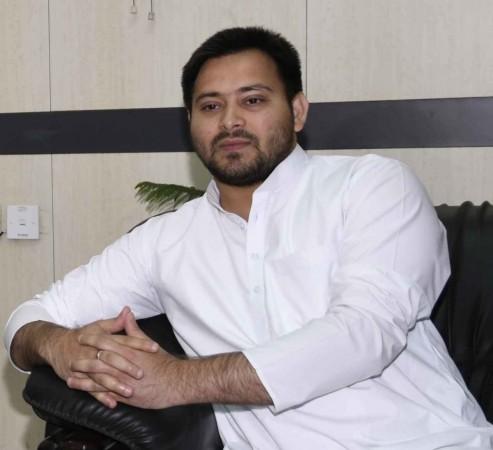
The resignation of Nitish Kumar as the chief minister of the Mahagathbandhan government in Bihar over his fallout with ally RJD and realigning with the BJP means a whole lot of political possibilities now become a reality. But at the same time, it also marks the conclusion of a chapter of Indian politics. Or to say more specifically, the fall of the Nitish-Lalu partnership bids adieu to Indian politics 2.0 and confirms version 3.0.
The grand alliance in Bihar was the only hope for the 'secular' brigade of the country to stop Prime Minister Narendra Modi and his BJP's juggernaut. It saw an unlikely coming together of two old foes in Bihar and their decisive victory over the BJP in the Assembly elections of October 2015 still made Modi's massive victory of 2014 look a mundane affair (the BJP had even lost badly to the Aam Aadmi Party in February that year). But ever since, the BJP has only bettered its performance while the anti-BJP forces have declined further.
2017 saw fall of seculars in UP and Bihar
The year 2017 is a particularly significant milestone in the transition of Indian politics from version 2.0 to 3.0. In March, the Samajwadi Party (SP) and Bahujan Samaj Party (BSP), also considered significant pillars of the secular platform, were humiliated in the Assembly elections in UP and the BJP stormed to power with a massive majority.
And now, with another key state in the Hindi heartland also seeing the anti-BJP formation collapsing and the saffron party coming to power, one can clearly foresee how things are going to unfold ahead of the 2019 Lok Sabha elections.
It's end of Indian politics 2.0
The 2.0 version of Indian politics had started in the late 1980s and early 1990s after the Congress system (version 1.0) had fallen. The likes of Lalu Prasad Yadavs, Mulayam Singh Yadavs, Mayawatis (or rather Kanshiram), Nitish Kumars, M Karunanidhis and J Jayalalithaas had built their empires on the Congress's ruins.
These leaders had targeted various social groups as their vote-banks though they were always careful to nurture their images as messiahs of the Muslim community. This was because all these leaders wanted to grab the maximum share of the community which fell vulnerable with the weakening of the secular Congress and the rise of the saffron BJP.
The secular tradition thus had passed on to these regional satraps from the Congress and with the BJP still not a force as it is today, they laid the foundation of the bits-and-pieces politics in the country. The likes of Mamata Banerjee and Arvind Kejriwal joined the fray later.

This phase continued roughly between 1989 and 2014, i.e., about 25 years. This was the era of coalition politics which saw both unstable and stable governments of alliance. But by the time 2014 arrived, the Indian electorate was quite disillusioned with the 'secular' brand of politics that prevailed in the country, mainly because of its appeasement of minorities and indulgence in corruption, and looked up to a more upright and clean leadership.
Modi's rise marked the beginning of Indian politics 3.0
This paved the way for Modi's emergence and while his victory in the 2014 Lok Sabha election virtually buried the Congress's relics, the BJP's subsequent victories in various states confirmed that even those leaders who were thriving on the Congress's ruins are now past their expiry dates. The combination of pro-development, majoritarian and transparent leadership has seen the rise of a fresh political pattern and it is version 3.0.
Just like in the technology/automobile industry where old-generation gadgets/vehicles gradually lose steam and lose out to the newer ones, Indian politics is also witnessing a pattern whereby the 2.0 generation is slowly losing the battle of survival against the 3.0 generation which is getting stronger.
While the likes of Mulayam Singh Yadavs and Lalu Prasads have received decisive blows to their respective political careers and there is very little chance of them returning to their days of glory, Nitish Kumar is certainly going to be a weak candidate now depending on the BJP for his political survival. There are still leaders like Banerjee and Kejriwal who are holding on to their respective forts but they know how difficult it is getting for them to maintain the lead.
Politics is an irreversible process and just like they were the heroes one day who had thrived on the ruins of the Congress, the 2.0 leaders today need to admit that their days are limited now, both because of their age and the fact that India has changed a lot. Modi has a world of advantage against them and there is very little possibility of him losing the plot against these worn-out politicians. This is how politics unravels its story. The Modi-Amit Shah duo will also be aware of the fact the day version 4.0 arrives on the scene.














